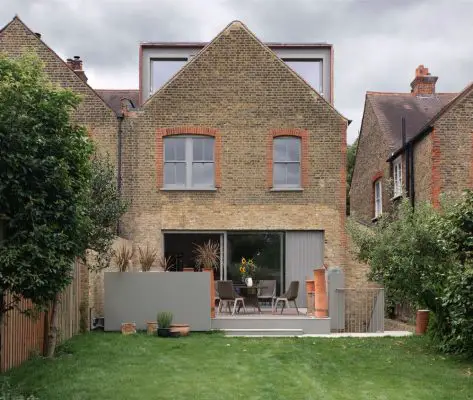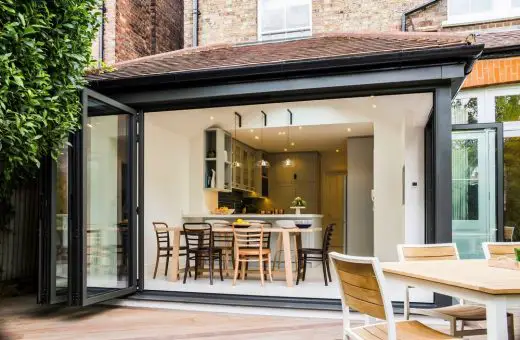Rise of refurbishment over demolition in London, UK capital property renewal, British city refurb
Rise of Refurbishment Over Demolition in London
17 October 2024
Sustainability in Urban Development: The Rise of Refurbishment Over Demolition in London with Greycoat CEO Nick Millican
Sustainable urban development is increasingly becoming a central focus for London’s real estate sector. As the city faces the dual pressures of population growth and environmental responsibility, the shift from traditional demolition projects to refurbishment has gained significant momentum.
Refurbishment is now recognized as a key strategy for reducing the environmental impact of urban development, aligning with circular economy principles by focusing on material reuse and extending the life of buildings. By preserving much of the existing structure, refurbishment offers significant carbon savings—the embodied carbon footprint of a refurbished building is typically half that of new construction.
The real estate market is also shifting, with recent figures showing refurbishment projects making up 70% of office construction in 2020, and May 2023 seeing the highest number of office refurbishments in nearly two decades. From a business perspective, refurbishment offers lower risks, shorter project timelines, and growing tenant demand for low-carbon buildings, making it an attractive and sustainable option for developers.
Among the companies leading this transition is Greycoat Real Estate, known for its extensive experience in transforming existing buildings while prioritizing sustainability. Under the leadership of CEO Nick Millican, the firm has built a reputation for prioritizing environmentally responsible development over traditional methods of demolition and new construction. Greycoat has taken proactive steps to ensure that every one of their projects align with the broader goals of sustainable urban growth in the capital, establishing a clear focus on reducing carbon emissions.
Millican himself has championed the refurbishment approach, which has been central to Greycoat’s operations for years. Speaking about the company’s strategy, he noted, “We’ve generally focused on large refurbishment projects, and I think this approach is becoming more common due to the embedded carbon you preserve by retaining a building’s structure, rather than demolishing it and constructing something new.” His leadership has solidified Greycoat’s role as a pioneer in London’s green building movement, setting a high bar for sustainability standards in the industry.
The Environmental Case for Refurbishment Over Demolition
Embedded carbon, also referred to as embodied carbon, encompasses the greenhouse gas emissions generated during the entire lifecycle of a building, excluding its operational energy use. These emissions arise from the extraction, manufacturing, and transportation of building materials, as well as the energy used during construction, maintenance, repairs, and eventual demolition.
Addressing embedded carbon is critical due to its significant environmental impact—it is estimated that embedded carbon accounts for 11% of global carbon emissions and can represent up to 75% of a building’s total emissions over its lifetime. This becomes especially important as buildings become more energy-efficient, shifting the focus to reducing the upfront carbon costs associated with construction.
Demolition not only releases the embedded carbon stored in a building’s materials but also requires energy-intensive machinery often powered by fossil fuels, further contributing to carbon emissions. The process generates substantial amounts of construction and demolition (C&D) waste, which often ends up in landfills, exacerbating environmental degradation. Transportation emissions from hauling debris and new construction materials also add to the project’s carbon footprint. Older buildings may also contain hazardous materials like asbestos, which complicates waste disposal and poses additional environmental risks.
Nick Millican emphasizes the practical and environmental benefits of refurbishment in reducing carbon emissions. “Reusing materials from demolished buildings is extremely difficult—it’s not really practical. So, the more of the original structure you can keep, the better the carbon footprint of the project.” said Millican.
By comparison, refurbishment reduces these impacts by minimizing the need for new materials, conserving resources, and drastically reducing both waste generation and carbon emissions. Additionally, demolition wastes the embedded carbon stored in the materials of the existing structure, and this loss is further compounded by the carbon-intensive processes required to produce and transport new materials for reconstruction. Refurbishment conserves much of this embedded carbon, significantly lowering the project’s overall environmental footprint.
The Role of Planning Regulations in London
London’s planning regulations are increasingly focusing on sustainable development, with local boroughs tightening restrictions around demolition to promote more environmentally conscious practices. At the heart of this shift is the London Plan, the city’s overarching spatial development strategy, which prioritizes the retention and refurbishment of existing buildings over demolition.
This plan mandates Whole Life Carbon assessments for major projects, ensuring that both embodied and operational emissions are considered in development decisions. In addition, the plan promotes circular economy principles, requiring developers to account for how materials can be recovered and reused throughout the lifecycle of a project.
Local boroughs are taking these guidelines further by implementing stricter controls on demolition. For instance, many boroughs now require a demolition notice to be submitted weeks in advance, along with processing fees to cover inspection and administrative costs. Boroughs such as Tower Hamlets have introduced conditions that govern the demolition process, including post-demolition site treatment and remedial works on adjoining buildings. Moreover, these regulations actively encourage refurbishment over demolition, with some boroughs considering amendments to laws like the Landlord & Tenant Act 1954 to make retrofitting existing premises easier for landlords.
Nick Millican notes that these challenges go beyond profitability, highlighting that regulatory bodies are forcing developers to defend demolition decisions. “You have to really justify why you’re doing it. It is not just a case that you make a bit more money,” says Millican. This reflects the growing push from local councils to ensure that developers prioritize environmental concerns, aligning projects with broader sustainability goals rather than focusing solely on financial gain.
Millican also emphasizes the regulatory hurdles developers face in areas like Westminster, where local councils have taken a particularly strong stance against demolition. “It’s becoming increasingly hard to get permission to demolish buildings in London… Westminster has taken the strongest stance, and it really is very challenging,” he explains. These restrictions are designed to promote refurbishment and adaptive reuse strategies, especially in conservation areas or for listed buildings, where demolition requires additional permissions or special consent.
In tandem with these planning regulations, financial incentives are being discussed to further encourage refurbishment. Proposals such as reducing VAT on refurbishments from 20% to 5% are being considered to create a more level playing field with new construction. This reflects a wider recognition that sustainable development through refurbishment is not only environmentally responsible but also essential for reducing the carbon footprint of London’s built environment.
The Future of Refurbishment in London’s Real Estate Sector
As London continues to expand, the demand for sustainable development practices is growing rapidly. With the city’s population expected to surpass 10 million by 2050, urban growth will place immense pressure on the real estate sector to adopt environmentally responsible building methods.
Developers and regulatory bodies alike are recognizing the environmental and economic benefits of retaining and refurbishing buildings, which aligns with the goals of reducing carbon emissions and minimizing waste. Nick Millican captures this trend, noting, “I think we’ll see over time more and more focus on retention and refurbishment rather than demolition and rebuild.”
As both developers and policymakers embrace this approach, companies like Greycoat are helping to shape a greener, more responsible future for London’s real estate landscape. In this evolving market, refurbishment is not only an environmental necessity but also a smart business strategy, offering lower risks and shorter project timelines while meeting the growing demand for sustainable spaces.
Comments on this guide to Rise of refurbishment over demolition in London, UK article are welcome.
London Residential Properties
London Architecture Designs – chronological list
London Architecture Walking Tours
London Architect – design practice listing on e-architect
New London Property Designs – architectural selection below:
Duke’s Avenue House, Chiswick
Architects: IBLA

photo : Brotherton Lock
Contemporary House in London
Design: LLI Design

photograph © Rick Mccullagh / LLI Design
Victorian Townhouse in Highgate
Building Articles
Contemporary Architecture
Comments / photos for the Rise of refurbishment over demolition in London, UK page welcome.






